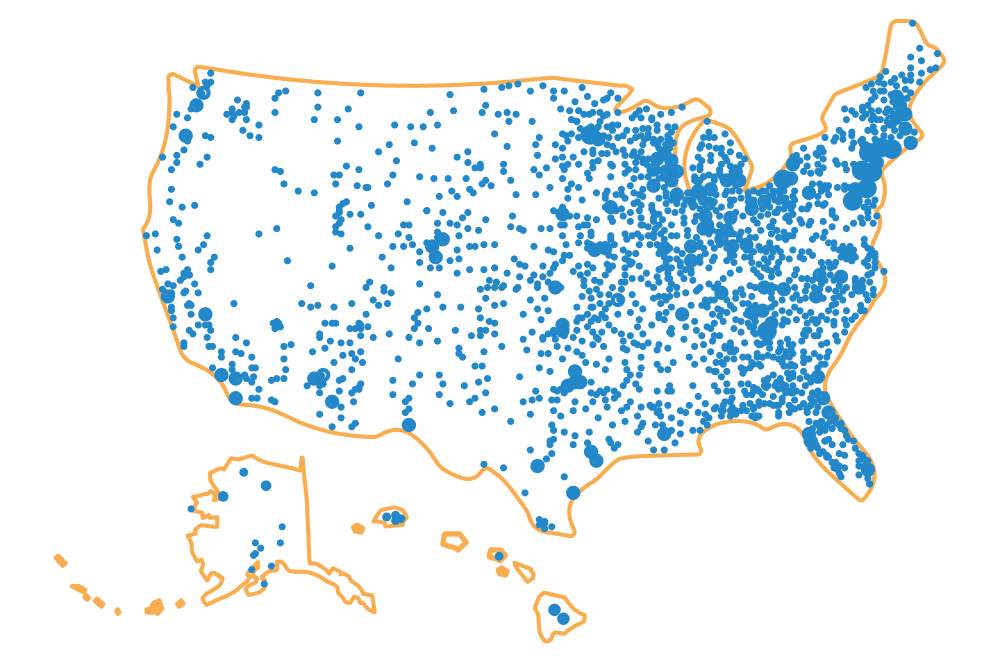If 2025 is the year that you start saving for your children’s higher education, then explore 529 college savings plans. Set up by the federal government in 1996, 529s plans are the tax-advantaged way to save for whatever education comes after high school for your child. There are many reasons to save in a tax-free 529 plan, especially when compared to the typical, taxable bank savings account.
Big tax benefits
529 plans allow your college savings to grow in a tax-advantaged manner. First, all earnings, including interest, grow tax-free. This means that all of the earned income is yours to use to cover qualified college costs without negative tax consequences.
Second, all 529 plan withdrawals are tax-free when used qualified higher education expenses, which are those required costs for attendance at a school.
Third, for Ohio residents with an Ohio 529 CollegeAdvantage, account, there’s an additional tax advantage. Ohioans can deduct their Ohio 529 contributions from their Ohio taxable income, up to $4,000 per year, per beneficiary, with unlimited carry forward.
In other words, an Ohio resident can take up to a $4,000 deduction from their state income taxes for contributions to each Ohio 529 plan with a different beneficiary. For example, if an Ohio account owner has three Ohio 529 plans for three children and contributes $4,000 annually to each beneficiary, they can maximize this tax benefit up to $12,000 per year. The unlimited carry forward for the state income tax deduction means that $4,000 per year is not a contribution cap. The taxpayer can continue to subtract $4,000 per year, per beneficiary, from their Ohio taxable income until all the Ohio 529 Plan contributions have been deducted.
Compound interest is a superpower for growth!
There are other factors to help build up your 529 plan as well as the tax benefits. Compound interest is a major source of growth for any savings program. For a 529 college savings plan, the compound interest is accrued not just on the original contribution but on every contribution. Compound interest is also added to the 529 investment options earnings and the already accumulated interest.
If you would like to see the power of compound interest, use this calculator from U.S. Securities and Exchange Commission to input your information to see how compound interest can build up your college savings account.
The effect of compounding is especially powerful over a long time period as the amount of earned interest can grow larger and larger. This is an excellent reason to start as 529 fund as early as possible for your child.
“Save here, go anywhere” with 529 plans
Just because you saved in Ohio’s 529 Plan doesn’t mean your child has to attend an Ohio college or university. The same is true of other state’s 529 programs. Your 529 college savings plan can be used nationwide at any post-secondary educational institution, including four-year colleges or universities, two-year community colleges, trade or vocational schools, apprenticeships, and certificate programs, or graduate schools. If the school has a Federal School Code on the Free Application for Federal Student Aid (FAFSA), then the withdrawals to cover qualified higher education expenses at that school will be tax-free.
Never too late to start saving
You may be worried that you are starting too late to save for a higher education. While it’s beneficial to start saving early to maximize the 529 tax benefits and compound interest, you can still take advantage of the benefits whenever you start to save.
Research from Institute for Higher Education Policy shows that when a child know that there are college savings set aside for them, they are much more likely to expect to attend college. In fact, children with even just $1 to $499 in college savings are three times more likely to attend college and then four times more likely to graduate than those with no savings.
So, even if you are starting later, any college savings can inspire your child, whether they want to attend a four-year university, two-year community college, trade or vocational school, apprenticeship, or a certificate program.
529 plans work with scholarships
When you save in a 529 plan, you can be assured that your college savings account is made to work with scholarships.
As most scholarships don’t provide a “full ride," your 529 plan can help pay for the rest of the costs. Tuition, room and board, mandatory fees, books, supplies, computers and related equipment and services are 529-qualified higher education expenses.
If the scholarship does cover all of your student’s higher education expenses, then you can also hold onto the 529 account to use if your child decides to pursue dental, law, medical, or other graduate school options. You also have the option to transfer the 529, without any tax penalty, to any other beneficiary who is related to your child, including siblings, stepsiblings, parents, stepparents, cousins, grandparents, nieces and nephews, and yourself. In addition, there are no time limits on when you have to use the funds saved in a CollegeAdvantage Direct 529 plan so you can keep saving in it for your grandchildren’s future college costs.
529 plans and financial aid
Saving for your child’s future higher education in a 529 will not hurt your chances for federal financial aid.
A 529 college savings plan has a minimal effect on need-based federal financial aid. At most, a parent-owned 529 plan will only be counted up to 5.64% of its total when you fill out FAFSA. For example, if you have saved $10,000 in a 529 plan, only up to $564 of it will be counted as an asset on the form. And wouldn’t you rather have the $10,000 in college savings and potentially lose $564 in financial aid, while receiving all the remaining aid for which your child is eligible?
Investment strategies with which you can be comfortable
Whether you’ve started saving for your child’s higher education before they are born or if you are getting a later start, Ohio’s 529 Plan offers account strategies based on your child’s age. These life milestones are the perfect opportunity to start, ramp up your saving, and take advantage of Ugift and Upromise. Based on your child’s age — baby to toddler, kindergarten to elementary school, middle school, high school, and college — review the appropriate guidance and choose for yourself the best path for your 529 account.
Wide variety of 529 investment choices
Ohio’s 529 Plan offers ready-made age-based portfolios —the Advantaged Age-Based Portfolio (AABP) and Vanguard Ohio Target Enrollment Portfolios (TEP) — that reflect college-savings industry standards of smoother glide paths. A glide path determines the asset allocation mix within an investment option.
With age-based 529 investment options, the asset allocation mix is created through age bands. When the beneficiary is young, there are more stocks (equity) in the portfolio. Why? Stocks are affected by market volatility. Therefore, if there is an economic downturn while your child is young, there will also be more time for the college savings plan to recover. As the beneficiary grows older, the mix adjusts with each new age band, reducing the amount of equity and increasing the amount of more conservative investments such as fixed-income and cash preservation options.
You can also create your own 529 college savings plan with a wide variety of investment choices from our partners Vanguard, Dimensional Fund Advisors, and Fifth Third Bank. You can build your investment portfolio with international equity options, U.S. equity options, balanced options, fixed-income options, capital preservation option, and banking options.
Tools to shape your 529
Ohio’s 529 Plan offers tools and calculators to help you shape the college saving account that best fits the needs of your family. The College Savings Estimator can help you determine what dollar amount you would like to set aside to reach your college savings goal. The Cost of Delaying Savings Tool can show how starting early with your higher education savings can really build up, even if it’s a small contribution to start. The Tax Benefit Tool illustrates how the tax-free earnings in a 529 plan allow you to keep every dollar that grows in the account, unlike a taxable bank savings account.
This list offers many reasons to save in a tax-free 529. Ohio’s 529 college savings plan is a simple way to save for any higher education goal and it’s accepted nationwide. There is no fee to open an Ohio 529 Plan and the minimum contribution is only $25. The minimum contribution to open a Fifth Third 529 CD, at any term, is $500.
An investment in an Ohio’s 529 Plan is an investment in a child where every dollar saved today is a dollar that doesn’t have to be borrowed later. A 529 account can be used for whatever comes after high school, including four-year universities, community colleges, trade or vocational schools, certificate programs and apprenticeships. Learn, plan and start with as little as $25 today at CollegeAdvantage.com.
This article was originally posted in February 2020 and has been updated to reflect new information for 2024








